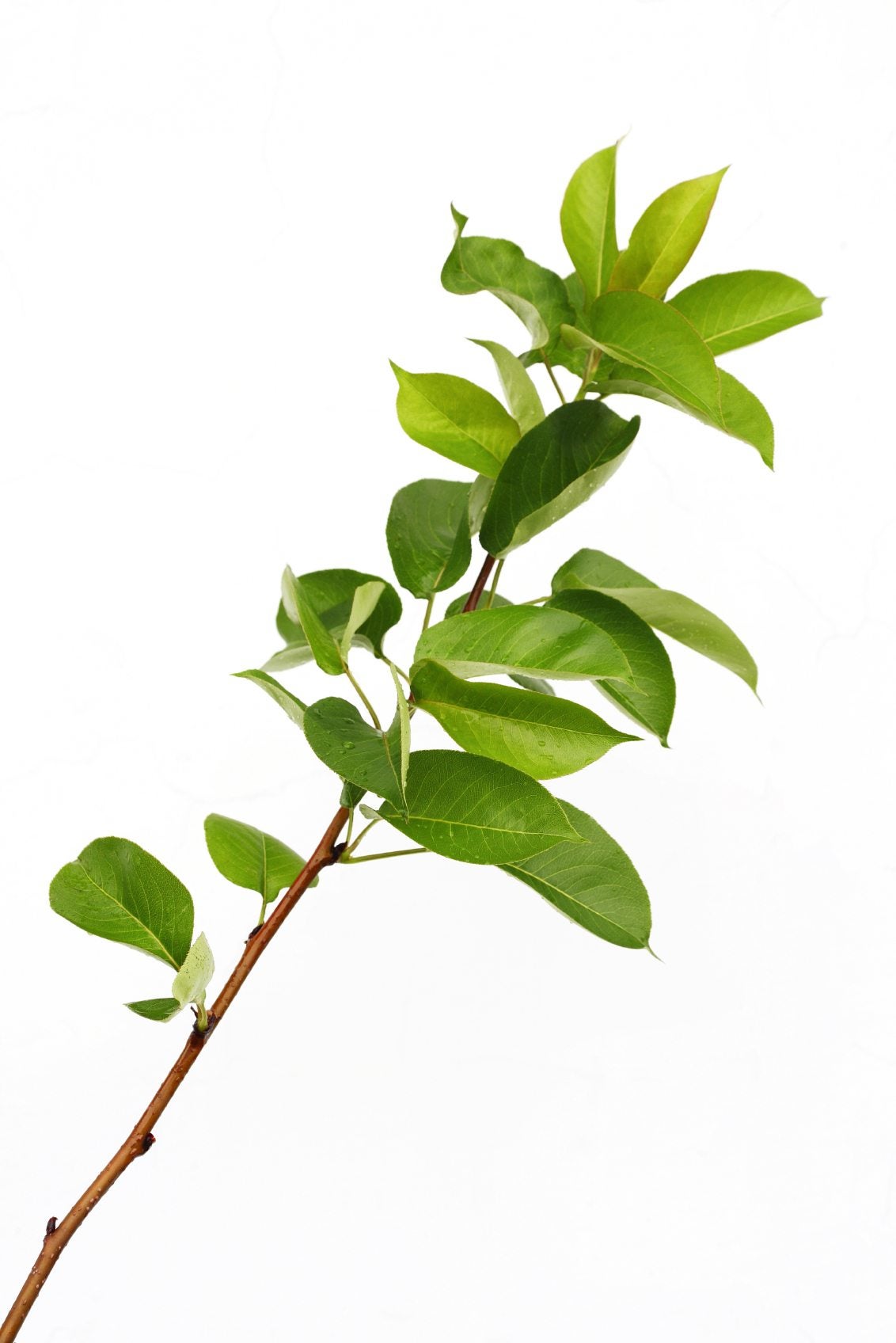Taking Pear Cuttings – How To Propagate Pear Trees From Cuttings

I don’t have a pear tree, but I’ve been eyeing my neighbor’s fruit-laden beauty for a few years. She is kind enough to give me a few pears each year but it’s never enough! This got me thinking, maybe I could ask her for a pear tree cutting. If you’re new to pear tree propagation, like me, then a little education about how to propagate pear trees from cuttings is in order.
How to Propagate Pear Trees from Cuttings
Pear trees are native to temperate regions of Europe and hardy to USDA zones 4 to 9. They thrive in full sun and mildly acidic soil with a pH of between 6.0 and 6.5. They have a relatively contained height and are, thus, excellent additions to most home gardens. Most pear tree propagation is done through rootstock grafting, but with the proper care, growing pear trees from a cutting is possible. That said, I think it is advisable to start multiple cuttings to ensure that at least one will live.
Taking Pear Cuttings
When taking pear cuttings, only take from a healthy tree. Ask permission first, of course, if you are using someone else’s tree (Suzanne, if you see this, may I have a few cuttings from your pear tree?). Select a new wood (green stem) cutting from a branch tip that is ¼ to ½ inch (6 mm. to 1 cm.) in width with plenty of growth nodes along the stem.
Take 4- to 8-inch (10-20.5 cm.) cuttings from dwarf fruit trees and 10- to 15-inch (25.5-38 cm.) pear tree cuttings from those that are large. Make a clean cut at a 45-degree angle ¼ inch (6 mm.) below a leaf node. Pour equal parts of vermiculite and perlite into a planter and water. Allow any excess to drain before planting the pear cuttings.
Don’t make it soupy, just damp. Make a hole for the cutting. Remove the bottom one-third of bark from the cutting and place it in water for five minutes. Then, dip the end of the pear tree cutting into 0.2 percent IBA rooting hormone, gently tapping off any excess. Gently place the barkless, hormone-powdered end of the cutting into the prepared hole and firm the soil around it.
Allow some space between multiple cuttings. Cover the cuttings with a plastic bag, secured at the top to create a mini greenhouse. Place the pot on a heating mat set at 75 degrees F. (21 C.), if possible, or at least in a consistently warm area with no drafts. Keep the cuttings out of direct sunlight.
Keep the growing pear trees from cuttings moist, but not wet, which will rot them. Wait patiently for a month or so, at which time you can remove the pot from the mat and place it outside in a protected area, out of direct sun, cold, and wind. Allow the trees to continue to gain in size so they are large enough to handle the elements before transplanting them into the garden – about three months.
Gardening tips, videos, info and more delivered right to your inbox!
Sign up for the Gardening Know How newsletter today and receive a free copy of our e-book "How to Grow Delicious Tomatoes".
After three months, you can transplant it directly into the garden. Now you just need to patiently wait for two to four years to taste the fruits of your labor.

Amy Grant has been gardening for 30 years and writing for 15. A professional chef and caterer, Amy's area of expertise is culinary gardening.
-
 Zinnias On Repeat: 10 Glorious Cut-And-Come-Again Varieties For Endless Summer Bouquets
Zinnias On Repeat: 10 Glorious Cut-And-Come-Again Varieties For Endless Summer BouquetsThese zinnia varieties keep giving all summer, making them the perfect choice for dedicated cutting gardens – or just the occasional homegrown bouquet.
By Ellen Wells
-
 Create A Romantic Garden Straight Out Of Bridgerton: Regency Era Romance In Your Garden
Create A Romantic Garden Straight Out Of Bridgerton: Regency Era Romance In Your GardenTry some romantic garden ideas straight out of Bridgerton. Flowers and gardens in the Regency era were lush and charming and you can get the same look!
By Bonnie L. Grant